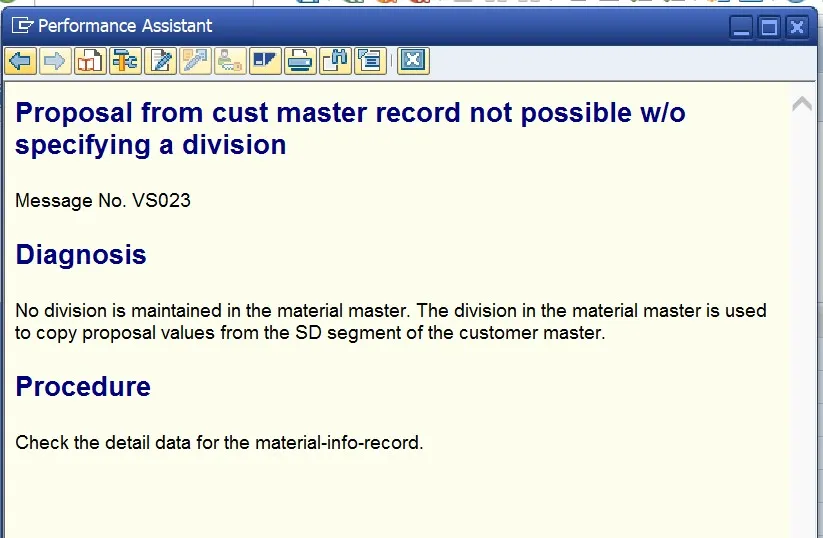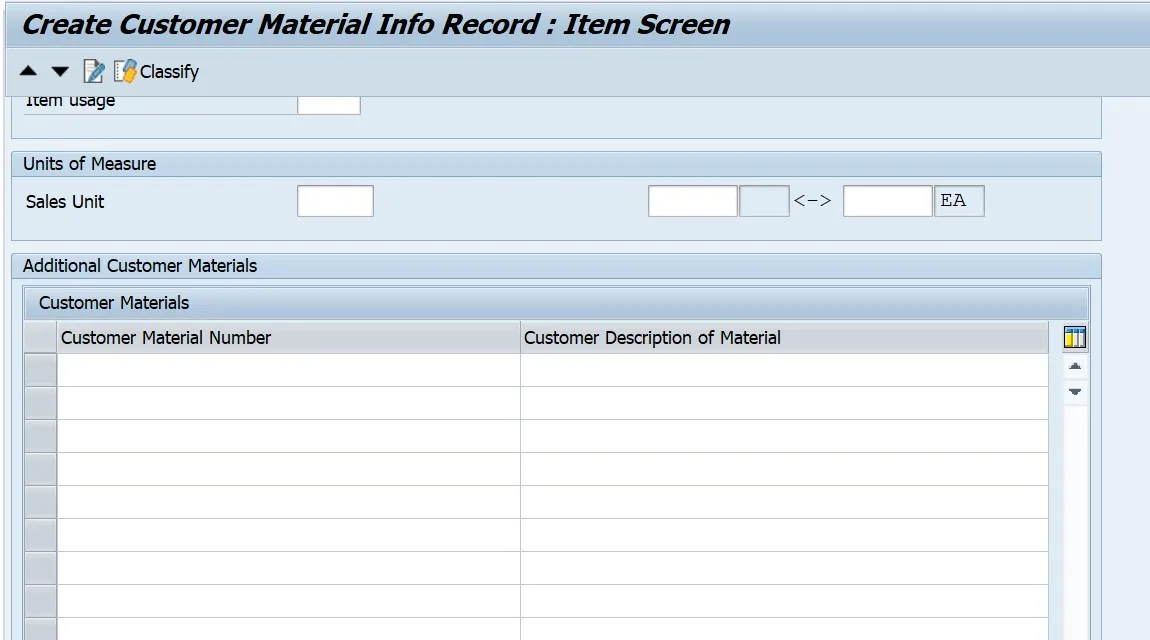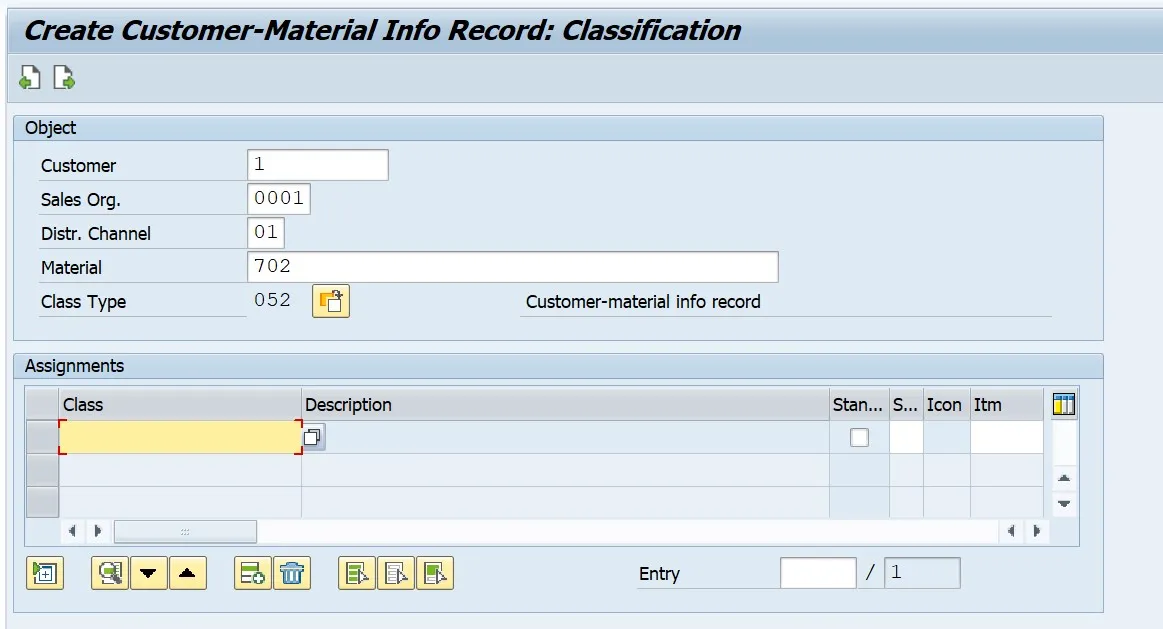Eursap's SAP Tips: Using Customer-Material Information Records in SAP
Using Customer-Material Information Records in SAP.
In the SAP system, materials can have different attributes according to the customer ordering them. A lot of this information can be captured using the Customer-Material Information Record, sometimes referred to as CMIR.
The transaction for use in the SAP GUI is VD51 to create, VD52 to change, and VD53 to display the CMIR. All these transactions are available in SAP Fiori too, with the Fiori app IDs matching the transaction codes (e.g. VD51, VD52, VD53).
CMIRs are created for a given sales organization and distribution channel. There are a number of reasons why CMIRs are an important part of the sales armoury. Much of the information contained in the CMIR is pulled in from the divisional data in the material master. If no division is maintained in the sales org 1 view of the material master, then entry of the material master in the CMIR creation transaction will prompt a warning message as below.

Data pulled in from the division in the material master are values such as:
• Sales unit of measure
• Unit of measure group
• Delivering plant
Material number determination
Firstly, and most obviously, it is possible to specify the customer’s own material number and description in the CMIR master record. This can then be used in the sales order in place of the SAP material master or the description. Additionally, a search term can be specified here. It is also possible to add multiple customer materials pointing to the same material in the CMIR. To do this, it is necessary to double-click the line to open up the Item Screen, then scroll down to get to the relevant area as below:

Shipping data
On the item screen of the CMIR, a plant can be specified. If a plant is found in the CMIR during the processing of a sales order, it is ALWAYS used as the preferred default plant. Plant determination in sales orders follows this sequence:
1. CMIR
2. Ship-to party plant
3. Material master data plant
The delivery priority and minimum delivery quantity can also be specified in the CMIR. Similarly to the plant, the values in the CMIR are used as a first priority in a sales document, over and above the values in the customer master record. See below for the information in the screen in the CMIR.

Partial delivery data
Partial delivery data such as partial delivery per item, maximum partial deliveries, under and over delivery tolerance, and unlimited tolerance checkboxes are available as in the screenshot below. Again, the values in the CMIR override the values in the customer master when being processed in a sales document.

Control data
Control data contains only the option “Item usage”, but this very useful field allows you to drive a different item category in a sales document. Item category determination in sales documents is executed based on a combination of the sales or delivery document type, the item category group on the material master, the item usage, and the higher level item category. By using the item usage on the CMIR, a new item category can be determined.

Units of measure
Units of measure can be determined using the CMIR. The sales unit field refers to the defaulted unit of measure in sales orders (overriding the material master unit of measure). Additionally there are two additional fields to the right of the sales unit. It is best to use an example to explain how these work. If your organization normally sells screws in packs of 100, then we have two amounts here: for the screw, and for the pack.
100 screws = one pack
• Denominator (divisor) for conversion of sales quantity into SKU – this represents the unit of measure which can be used to convert into a sales unit. In our example, this is screws, so this number would be 100.
• Numerator (factor) for conversion of sales quantity into SKU – this represents the equivalent number in packs, so in our example, 1.

Texts
Additional language texts can be added by clicking the Texts button on the front screen.

Classification data
Classification data can be added to the CMIR master record by clicking the Classify button. Classes can only be found using class type 52 (Customer Material Info Record).

Overview
Finally, an overview of the entire CMIR data can be seen by clicking on the Screen Output button in the top left corner:

This then shows all the fields in the CMIR as below

In summary, not only is CMIR information useful for holding customer specific mapping of material numbers, but additional information such as plant and units of measure can be maintained here. Additionally, CMIRs are used in EDI processing for accuracy of results.